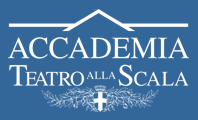J M C C Review of Opera theatre La Scala
The Teatro alla Scala (also known as La Scala) in ...
The Teatro alla Scala (also known as La Scala) in Milan, Italy, is one of the most famous opera houses in the world.
The theater season usually begins on December 7, the day of Saint Ambrose, the patron saint of Milan. All performances must end before midnight; Longer operas should start earlier. Antonio Bernocchi was the main financier for the reconstruction of the Teatro alla Scala in Milan, affected by the bombing of the war and reopened "as it was and where it was" on May 11, 1946. [1] [2] [3] .
It has been located in two buildings. A fire destroyed the first, the old Ducale Theater, on February 25, 1776, after a carnival gala. The ninety owners of the theater boxes asked Archduke Ferdinand of Austria to build a new theater and a temporary one during the works.
The neoclassical architect Giuseppe Piermarini made an initial design that was rejected by Count Firmian, an Austrian governor. A second plan was accepted by Empress Maria Teresa I in 1776.
The new theater was built on the site formerly occupied by the Santa Maria alla Scala church, which gave the theater its name. The church was deconsecrated and demolished, and within two years Pietro Marliani, Pietro Nosetti, and Antonio and Giuseppe Fe completed the construction of the new building. It was inaugurated on August 3, 1778, under the name of Nuovo Regio Ducal Teatro alla Scala, with the opera L'Europa riconosciuta by Salieri.
Like other theaters of the time, La Scala was also a casino.
The original structure was renovated in 1907, when it was changed to the current design. In 1943, during World War II, the bombings seriously damaged the theater. It was rebuilt and re-released on May 11, 1946 with a memorable concert conducted by Arturo Toscanini.
Many famous operas were premiered at La Scala and he had a very special relationship with the composer Giuseppe Verdi. However, for many years the composer did not perform any of his works there, as Verdi accused the orchestra of modifying his music.
Currently the building has a museum which is accessed from the foyer, with an extraordinary collection of paintings, sketches, statues and other documents related to the opera.
The theater was closed between January 19, 2002 and November 2004 for its restoration. This time the project was designed by the architect Mario Botta. During this period the company moved to the Teatro degli Arcimboldi. The restoration was controversial because those who looked after the preservation of the theater feared that the historical details would be lost. The most controversial decision was to demolish the entire backstage area to create a "modern and functional service area, worthy of one of the greatest theaters in the world," as argued. Instead, the philosophy that has guided the restructuring of the theater hall has been to restore La Scala to its original splendor and eliminate all subsequent modifications. Carpets and paintings that concealed the original marble have been removed and, where possible, the 18th century decorations of some historically important palchi have been recovered, such as the azure blue barcaccia of the viceroy. The company is considered satisfied and impressed with the sound quality and structure improvements. In the space that has been added to the back of the stage, more scenery can be stored. The booths were equipped with monitors where the script is presented in English, French or Italian.
For the reopening of the theater, the same opera that was used in its opening was chosen, L'Europa
Music DirectorsEdit
Arturo Toscanini (1898 - 1907).
Tullio Serafin (1908-1914).
Tullio Serafin (1917-1918).
La Scala remained closed between 1918

Comments: